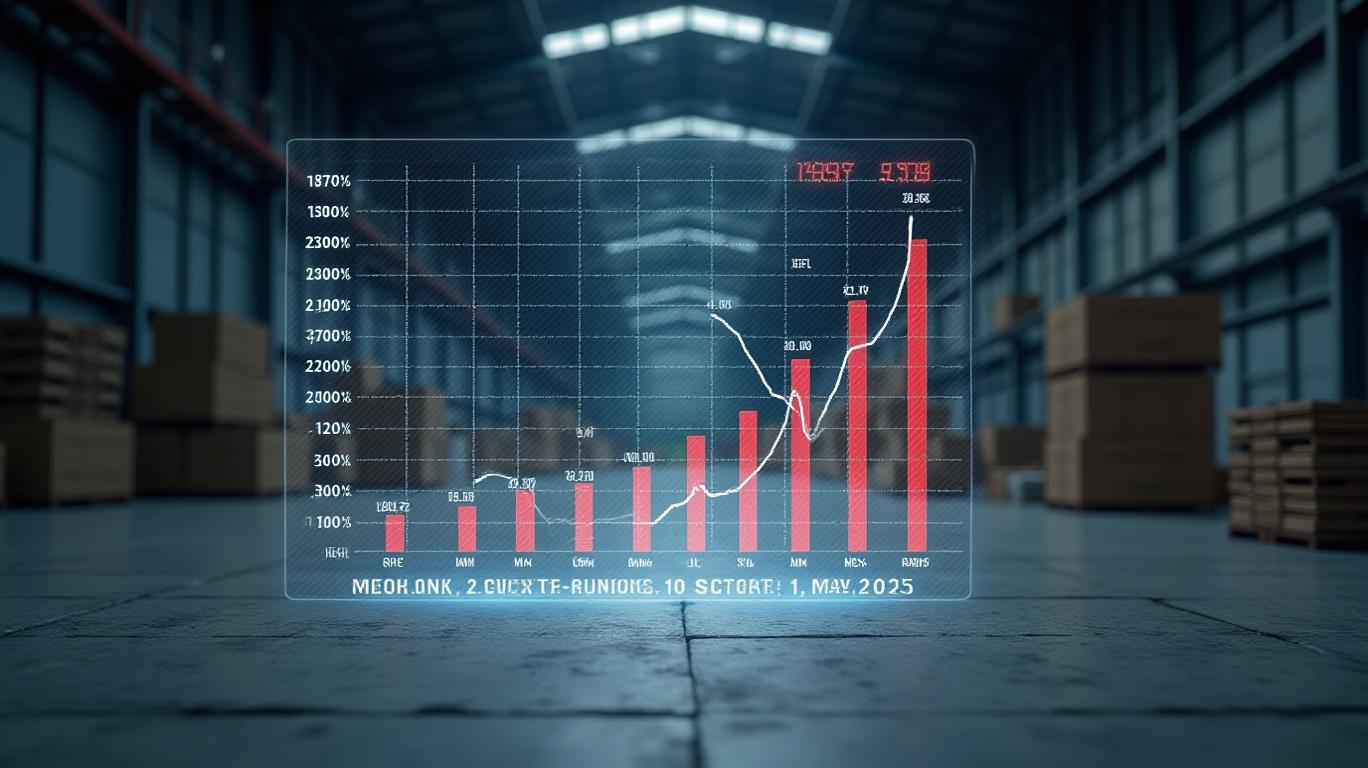Copper's Volatility Amid China Demand Uncertainty: Navigating Near-Term Risks and Long-Term Stimulus Potential
The global copper market finds itself at a crossroads. As of May 16, 2025, LME copper futures hover near $9,536 per ton, just above the critical $9,500 threshold that could trigger a "buy-the-dip" strategy. Yet, this price stability masks a stark divergence in supply and demand dynamics: rising Chinese inventories, weak export data, and geopolitical trade tensions weigh on near-term prospects, while the potential for Beijing’s infrastructure stimulus and a resolution to U.S.-China trade disputes could ignite a rebound. For investors, the path forward demands a tactical balance between opportunism and caution.
The Copper Crossroads: Oversupply and Hope
Copper’s volatility stems from conflicting signals. On one hand, Chinese copper imports surged in late April as buyers stockpiled ahead of potential tariffs, pushing
inventories up 34% week-on-week to 108,142 tons—a 6-month high. This build-up, driven by speculative buying and weak domestic demand, has created near-term oversupply. Meanwhile, LME stocks have plummeted to a one-year low of 179,375 tons, as shipments to the U.S. (driven by tariff-related arbitrage) flooded COMEX warehouses, pushing their inventories to an eight-year high of 168,563 tons.
The result is a $600/ton premium for U.S. copper over LME benchmarks—a gap narrowing from its March peak of $1,600—as traders front-run tariff risks. Yet, the market remains fragile. Analysts warn that the 90-day U.S.-China tariff truce, which temporarily paused retaliatory measures, has done little to resolve structural uncertainties.
Inventory Dynamics: A Tale of Two Markets
The surge in SHFE inventories signals a demand slowdown in China, where buyers have retreated from high-priced contracts. However, these stocks—though elevated—remain far below the 2023 peak of 268,337 tons, suggesting no catastrophic oversupply. Meanwhile, LME’s inventory decline reflects global supply chain reshaping: copper is flowing to the U.S. to avoid potential tariffs, leaving LME warehouses dominated by less desirable Russian and Chinese brands.
The Yangshan Copper Premium, a key gauge of Chinese import demand, has stabilized at $100/ton since March—a sign that buyers are no longer panicking—but remains below 2023 highs, underscoring weak fundamentals.
Demand Signals: China’s Dilemma
China’s copper consumption, the world’s largest, faces headwinds. Weak March-April export data (-20% QoQ in refined copper imports) and slowing construction activity have dampened demand. Yet, a critical wildcard remains: Beijing’s stimulus plans. If the government accelerates green energy projects, EV charging networks, and urban renewal programs—key planks of its 14th Five-Year Plan—copper demand could rebound sharply.
The Copper ETF (CPER), which tracks COMEX futures, rose 20% from $25.65 to $30.79 in late April 2025 on optimism about China’s infrastructure push. However, this rally faded as trade tensions resurfaced, underscoring the market’s dependence on policy clarity.
Policy Levers: The Catalyst for a Rebound
The path to recovery hinges on two catalysts:
1. U.S.-China Trade Resolution: A final Section 232 tariff decision (expected by summer 2025) could stabilize regional price disparities. If tariffs are imposed, U.S. stockpiles may slowly drain, alleviating oversupply pressures.
2. Beijing’s Stimulus Activation: A $300 billion infrastructure package, rumored to be in the works, could boost copper consumption by 150,000 tons annually—equivalent to 2% of global demand.
The Investment Case: Buy-the-Dip, But Proceed with Caution
Act if…
- Prices drop below $9,500/ton (current: $9,536), signaling an overreaction to near-term oversupply.
- SHFE inventories begin to decline, a sign of stronger demand or reduced imports.
- The U.S.-China tariff truce is extended or replaced with a binding agreement.
Avoid…
- Overexposure until LME-CME price gaps narrow (to ~25% of LME prices if tariffs are imposed) or trade uncertainties resolve.
- Ignoring geopolitical risks: U.S. sanctions on Russian copper or further trade disputes could disrupt flows.
Conclusion: A Volatile Dance Between Risk and Reward
Copper remains a high-beta play on global growth and trade policy. While near-term risks—weak Chinese demand, regional inventory imbalances—argue for patience, the $9,500/ton level represents a compelling entry point for investors willing to bet on Beijing’s stimulus and U.S.-China trade normalization.
The mantra for now: Buy the dip, but don’t chase the rally until the dust settles.

Comments
No comments yet